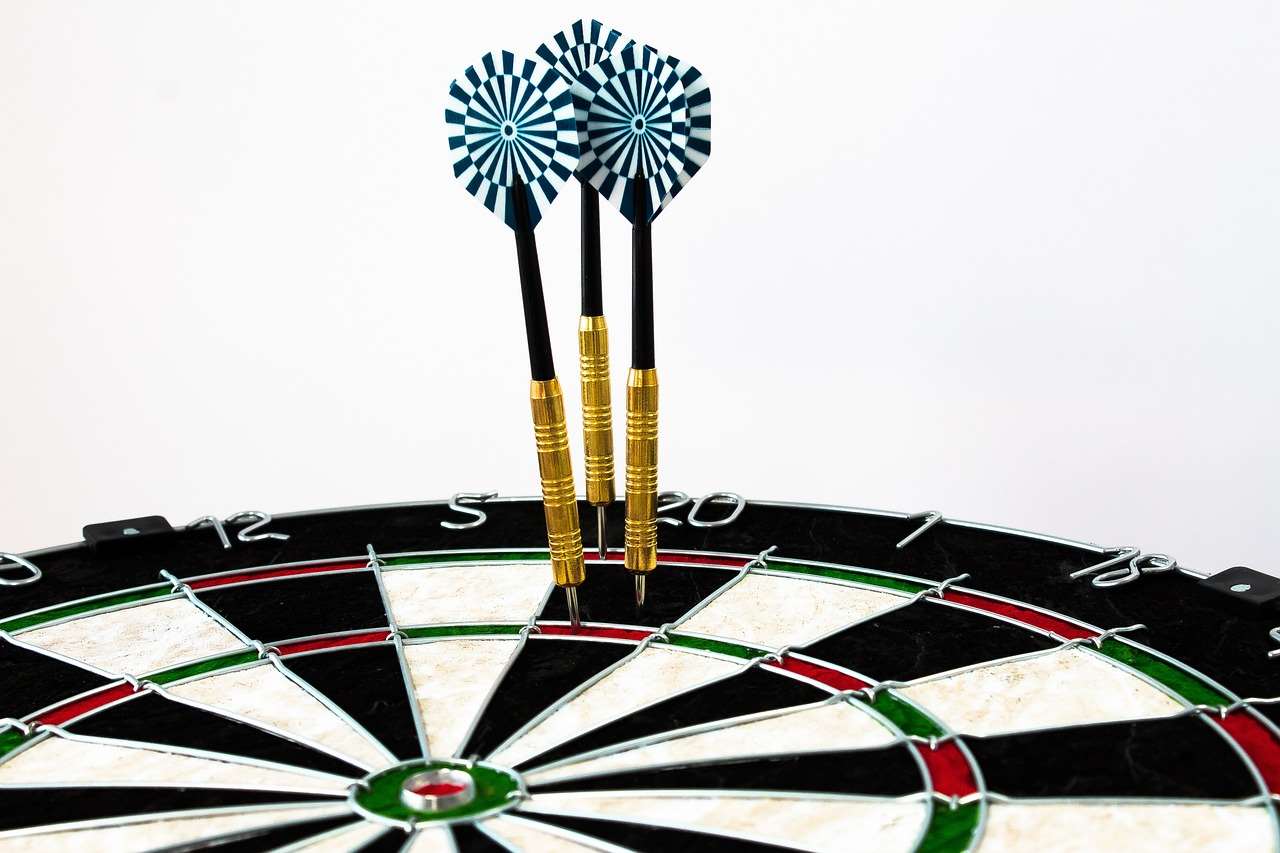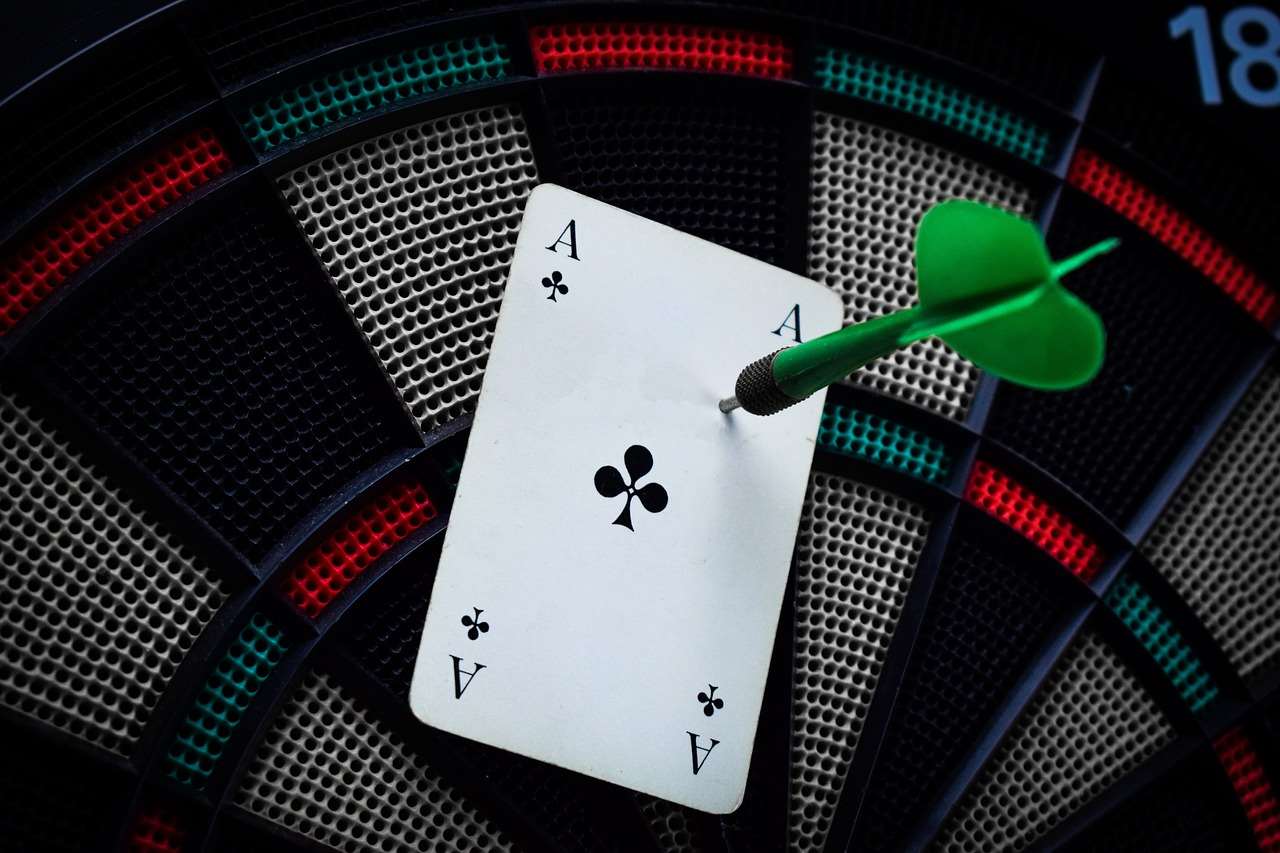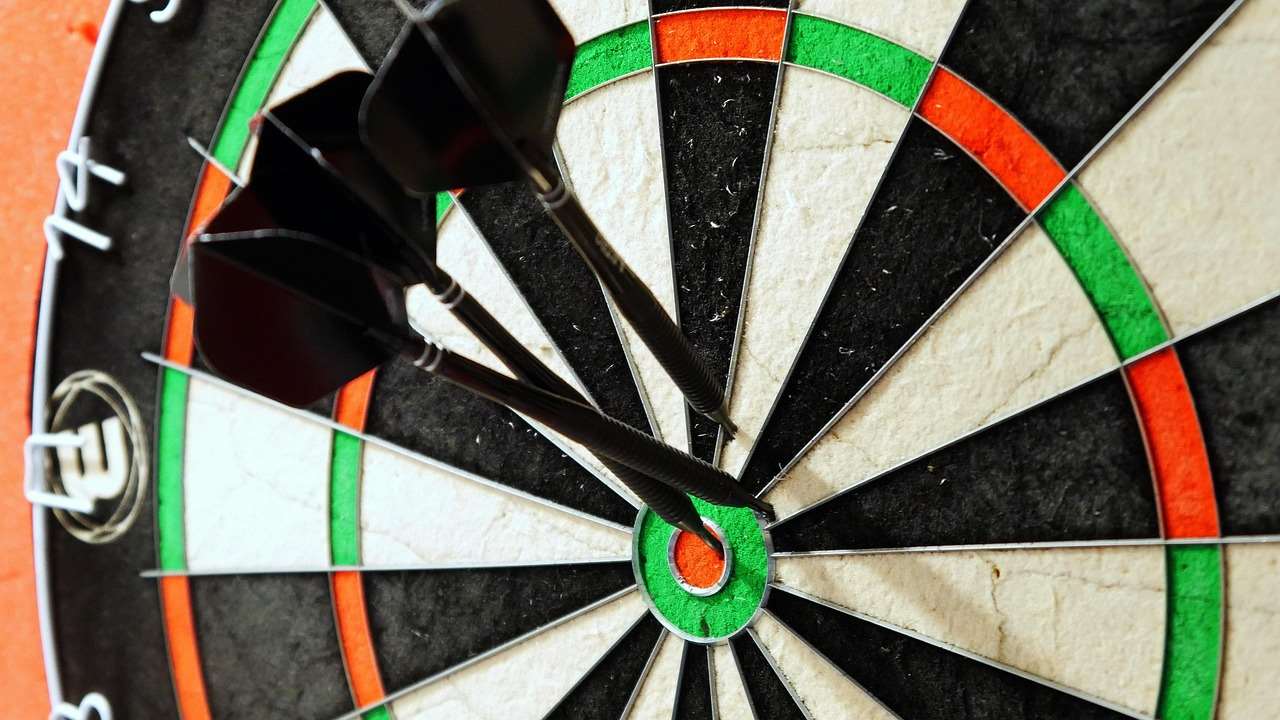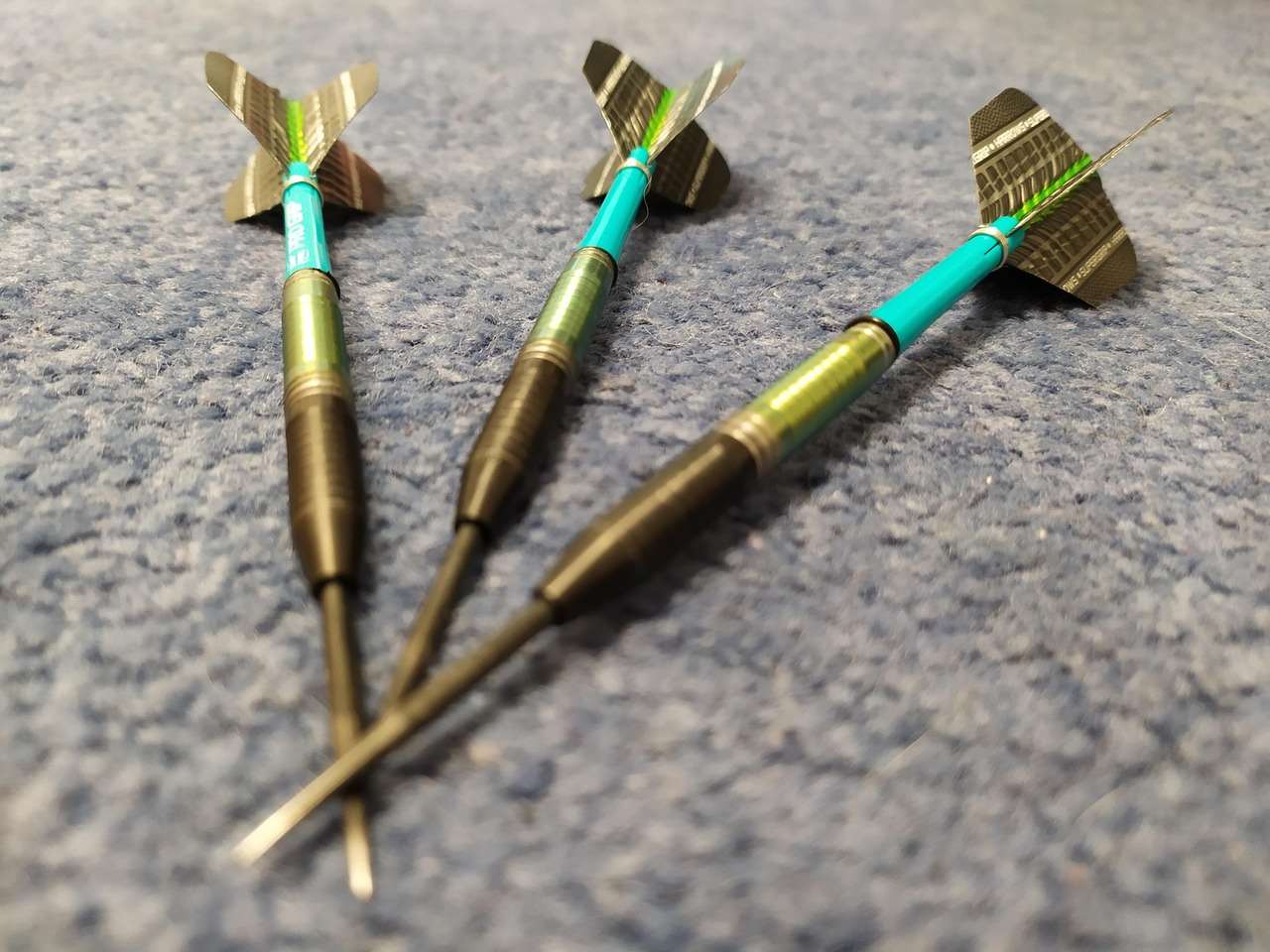The **darts max weight**, as mandated by both the PDC and WDF, is 50 grams, ensuring fair competition. This article will explore the significance of this weight limit, how it affects dart performance, and other factors that influence your game.
⚠️ Still Using Pen & Paper (or a Chalkboard)?! ⚠️
Step into the future! The Dart Counter App handles all the scoring, suggests checkouts, and tracks your stats automatically. It's easier than you think!
Try the Smart Dart Counter App FREE!Ready for an upgrade? Click above!
Understanding the Significance of Darts Max Weight
The restriction on **darts max weight** is crucial for maintaining a level playing field in professional darts. Without such a limit, players could potentially use extremely heavy darts that might offer an unfair advantage due to increased stability or momentum. The 50-gram limit ensures that skill and technique are the primary determinants of success, rather than the physical properties of the dart itself. This regulation promotes fairness and prevents the game from becoming a competition of who can throw the heaviest projectile.

Beyond fairness, the **darts max weight** regulation also influences the design and construction of darts. Manufacturers must carefully balance weight distribution, grip, and aerodynamics within the 50-gram constraint. This leads to a wide variety of dart designs, each catering to different throwing styles and preferences. Players can choose from a range of barrel shapes, materials, and grip patterns, all while adhering to the established weight limit.
Factors Influencing Dart Performance Beyond Weight
While the darts max weight is a critical specification, it’s important to remember that many other factors contribute to a dart’s overall performance. These include:
- Barrel Material: Tungsten is a popular choice due to its high density, allowing for slimmer barrels with concentrated weight. Brass and nickel-silver are less expensive alternatives but often require larger barrels.
- Barrel Shape: Straight barrels, torpedo barrels, and bomb barrels each offer different balances and grip points. The ideal shape depends on the individual player’s throwing style.
- Grip: Knurled, ringed, and smooth grips provide varying levels of traction and control. The best grip is one that feels comfortable and secure in the player’s hand.
- Shaft Length and Material: Shorter shafts generally improve stability, while longer shafts can offer more control. Materials range from nylon to aluminum to carbon fiber. Consider how long do dart flights last.
- Flight Shape and Size: Larger flights provide more stability and drag, while smaller flights offer greater speed and less drag. Standard, slim, and kite flights are common options.
The Importance of Dart Balance
Dart balance is closely related to **darts max weight** and significantly affects how a dart flies. A well-balanced dart will fly straighter and more consistently. Balance is determined by the distribution of weight along the dart’s length. Front-weighted darts tend to penetrate the board more easily, while rear-weighted darts may fly with a higher arc. Center-weighted darts offer a more neutral feel.
Experimenting with different barrel shapes, shaft lengths, and flight types can help you fine-tune the balance of your darts to suit your throwing style. Many players use adjustable weight systems to customize the balance even further.
Choosing the Right Dart Weight for Your Throwing Style
While the darts max weight is capped at 50 grams, the “right” weight for you depends on your individual throwing style, strength, and experience. Most players find that darts in the 22-26 gram range offer a good balance of control and stability. However, some players may prefer lighter or heavier darts depending on their technique. For example, you might want to check out darts flight set for more customizable options.

- Lighter Darts (20-22 grams): Often preferred by players with a softer, more controlled throw. Lighter darts require less force and can be easier to aim.
- Medium Darts (22-26 grams): A good starting point for most players, offering a balance of control and stability. This weight range is suitable for a wide range of throwing styles.
- Heavier Darts (26-30 grams): Can be beneficial for players with a stronger, more forceful throw. Heavier darts tend to be more stable in the air and less affected by minor imperfections in technique. Remember, the darts max weight cannot be exceeded.
Experimentation is Key
The best way to determine the ideal dart weight for you is to experiment with different weights and see what feels most comfortable and consistent. Try throwing a few sets of darts in different weight ranges and pay attention to how they feel in your hand and how they fly. Consider visiting a darts shop where you can try out different darts before making a purchase. Don’t overlook the importance of dart bedarf for all your darting needs.
Professional Players and Their Dart Weights
Many professional darts players use darts within the popular 22-26 gram range, but there are also some who prefer lighter or heavier darts. It’s important to note that the pros have spent years refining their technique and choosing darts that perfectly complement their individual throwing styles. Studying their equipment can offer inspiration, but ultimately, you need to find what works best for you within the **darts max weight** restriction.

Keep in mind the darts masters odds can also be affected by equipment choice, though skill remains paramount.
The Legality of Darts Weight in Competitions
As mentioned earlier, the darts max weight is strictly regulated in professional competitions. Darts are typically weighed before matches to ensure they meet the official weight limit. Exceeding the **darts max weight** can result in disqualification. It’s the player’s responsibility to ensure their darts comply with the regulations.
It’s also important to be aware of other regulations regarding dart construction, such as the maximum length and diameter of the dart. These regulations are in place to prevent players from using unconventional or unfairly advantageous darts. Always check the specific rules of the competition you are participating in to ensure your darts comply.
Maintaining Your Darts for Optimal Performance
Regardless of the darts max weight of your darts, proper maintenance is essential for maintaining their performance and longevity. Here are some tips for keeping your darts in good condition:
- Clean your darts regularly: Use a soft cloth to wipe down the barrels and shafts to remove dirt, oil, and other debris.
- Sharpen your dart points: Dull dart points can cause bounce-outs and damage to your dartboard. Use a dart sharpener to keep your points sharp and properly shaped.
- Replace damaged shafts and flights: Worn or damaged shafts and flights can affect the dart’s flight path. Replace them as needed to maintain optimal performance.
- Store your darts properly: When not in use, store your darts in a case or container to protect them from damage.

Customizing Your Darts Within the Weight Limit
Even with the darts max weight constraint, there’s still plenty of room for customization. You can experiment with different barrel shapes, grips, shaft lengths, and flight types to create a set of darts that perfectly suits your throwing style and preferences. Many manufacturers offer custom dart services where you can design your own darts from scratch.
Remember that even small changes to your dart setup can have a significant impact on its performance. Take the time to experiment and fine-tune your darts until you find the perfect combination of weight, balance, and feel.
And if you’re ever unsure about where the player should stand, remember the line darts player stands behind called.
Steel Tip vs. Soft Tip Darts and Weight Considerations
The darts max weight rule applies to both steel tip and soft tip darts, but there are some differences in how weight is distributed and perceived. Soft tip darts are typically lighter than steel tip darts due to the plastic tips, which weigh less than steel points. However, the overall weight is still regulated, and players must choose darts that comply with the 50-gram limit.
Soft tip darts are often used on electronic dartboards, which require lighter darts to avoid damaging the board. Steel tip darts are typically used on traditional bristle dartboards. When switching between steel tip and soft tip darts, it’s important to adjust your throwing technique to account for the difference in weight and balance. If you’re hoping for a best darts score, adjusting to the different dart types is essential.

Additionally, a Mobile dart scorer can help you track your progress with different types of darts.
Conclusion
Understanding the darts max weight regulation is essential for both competitive and recreational darts players. While the 50-gram limit ensures fairness and prevents the game from becoming a contest of brute force, it also encourages innovation in dart design and allows players to customize their darts to suit their individual styles. Remember to experiment with different weights, barrel shapes, and grip styles to find the perfect darts for your game. Take the time to maintain your darts properly and always adhere to the official weight limit in competitions. Now, go out there, practice, and aim for that perfect score!
Hi, I’m Dieter, and I created Dartcounter (Dartcounterapp.com). My motivation wasn’t being a darts expert – quite the opposite! When I first started playing, I loved the game but found keeping accurate scores and tracking stats difficult and distracting.
I figured I couldn’t be the only one struggling with this. So, I decided to build a solution: an easy-to-use application that everyone, no matter their experience level, could use to manage scoring effortlessly.
My goal for Dartcounter was simple: let the app handle the numbers – the scoring, the averages, the stats, even checkout suggestions – so players could focus purely on their throw and enjoying the game. It began as a way to solve my own beginner’s problem, and I’m thrilled it has grown into a helpful tool for the wider darts community.